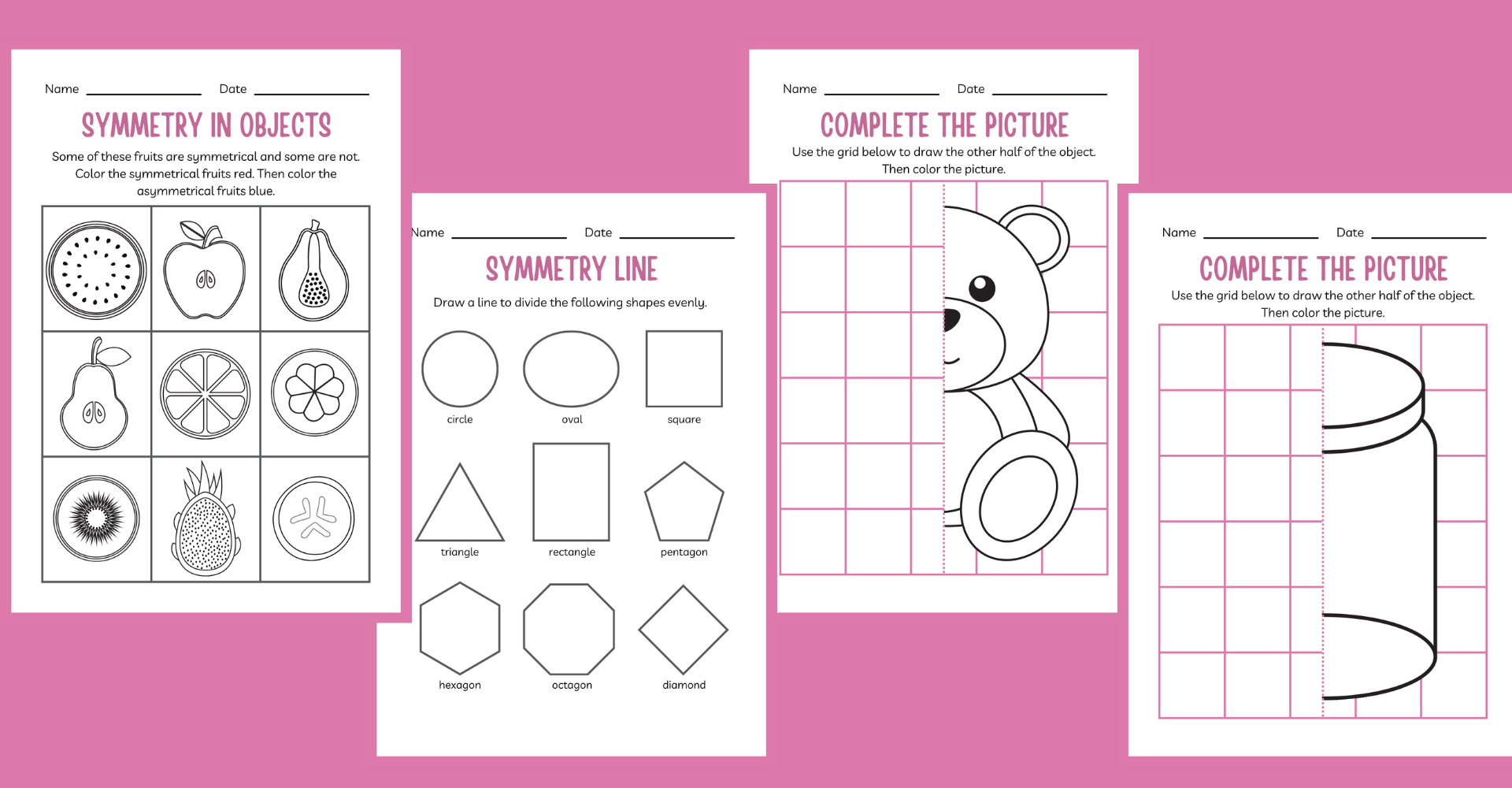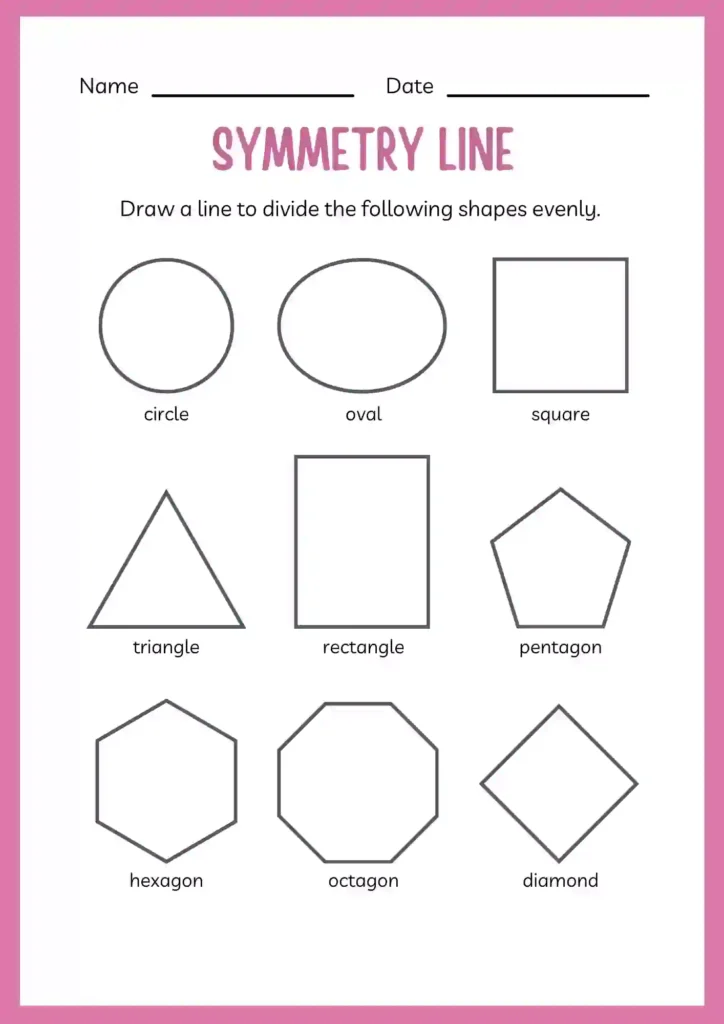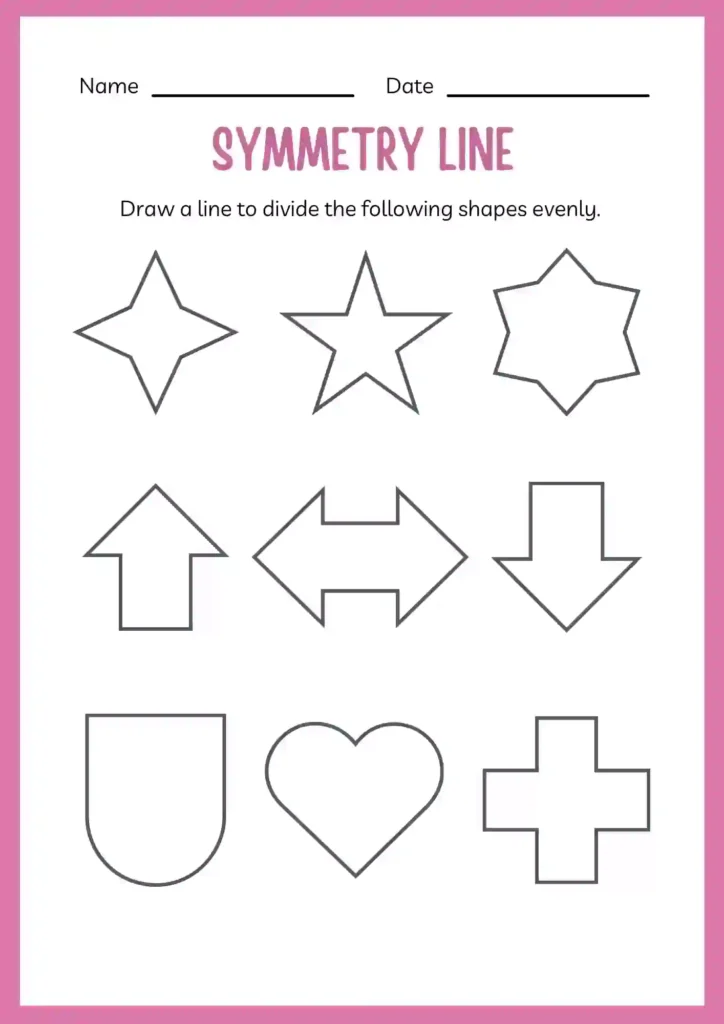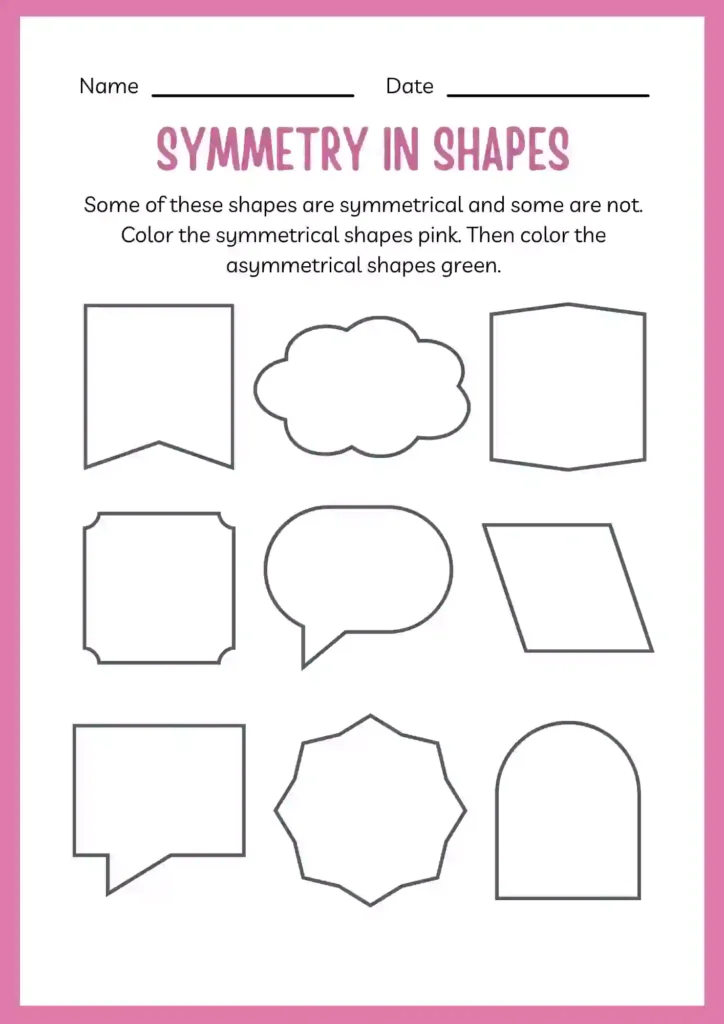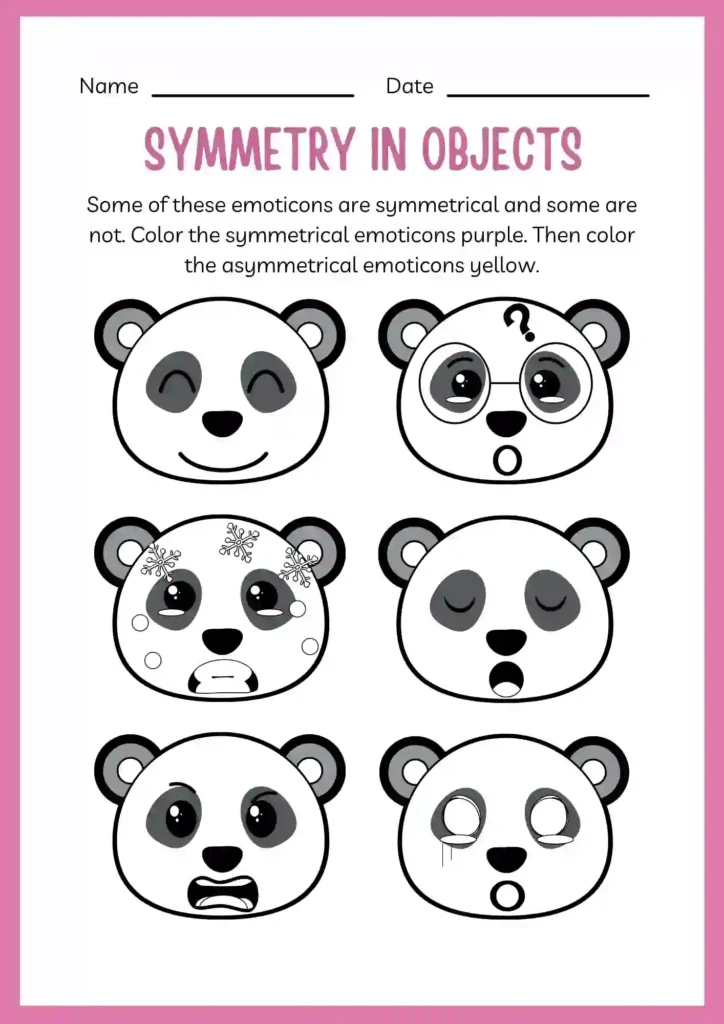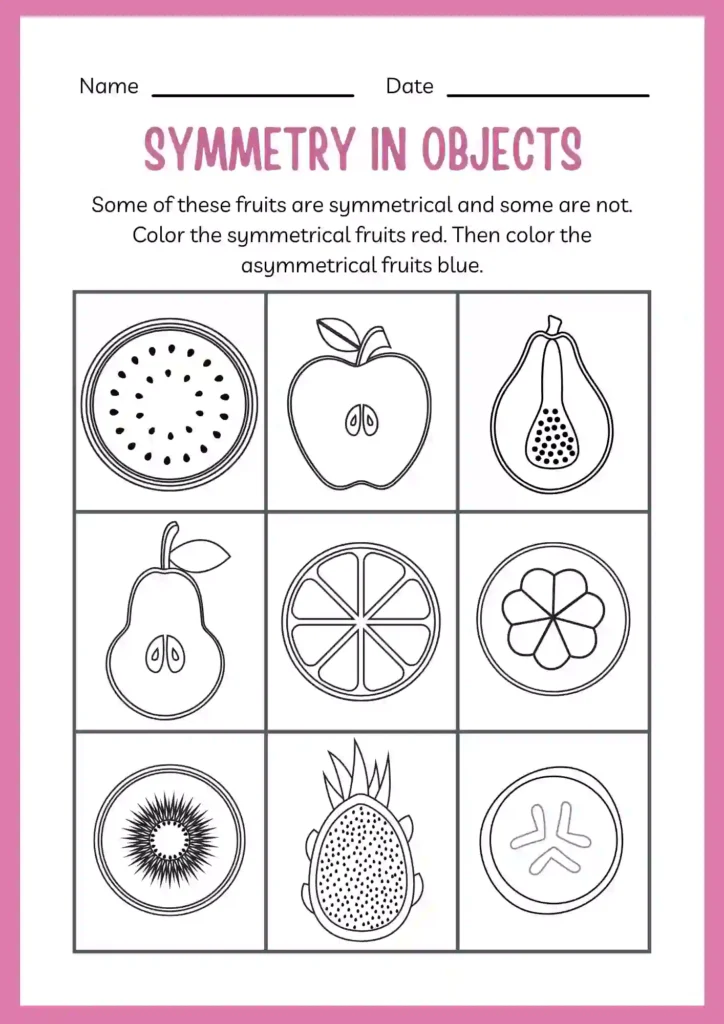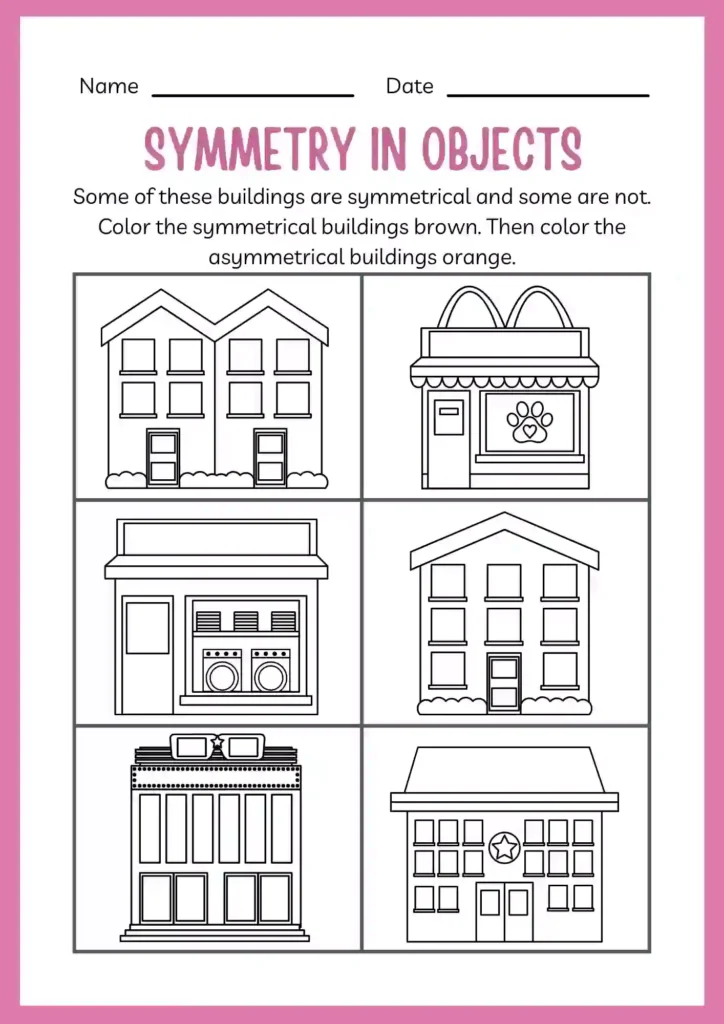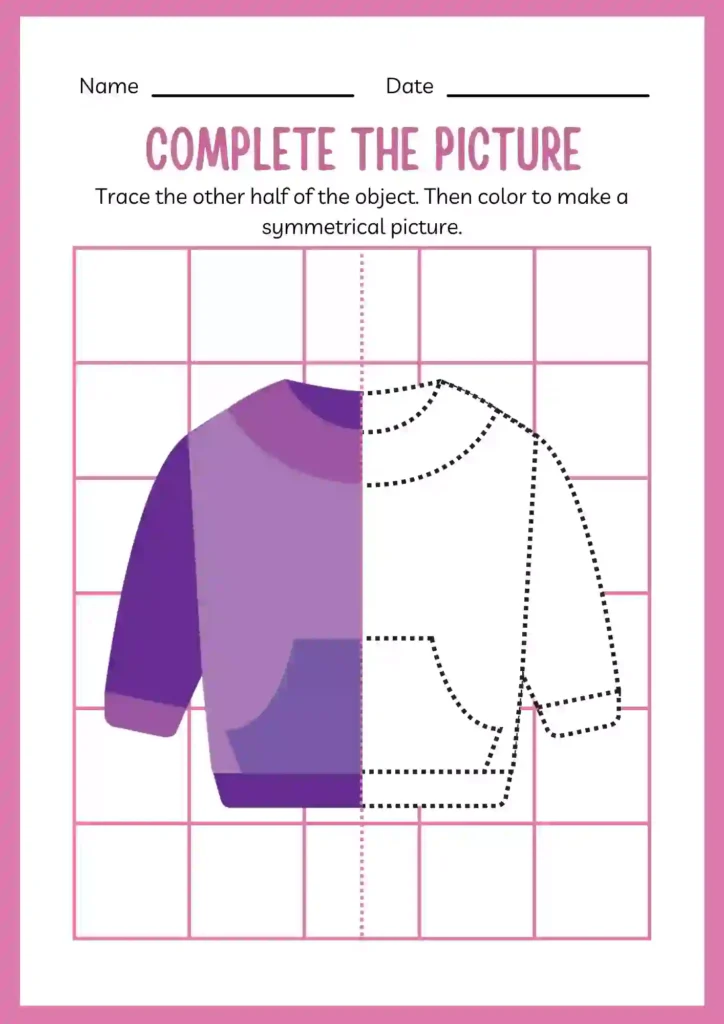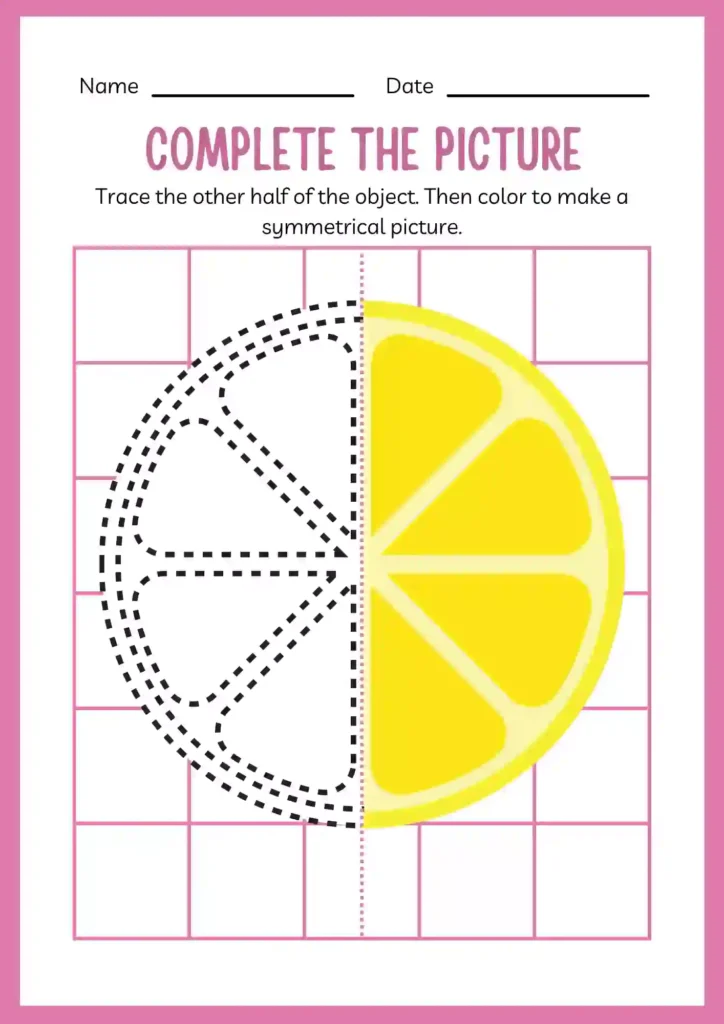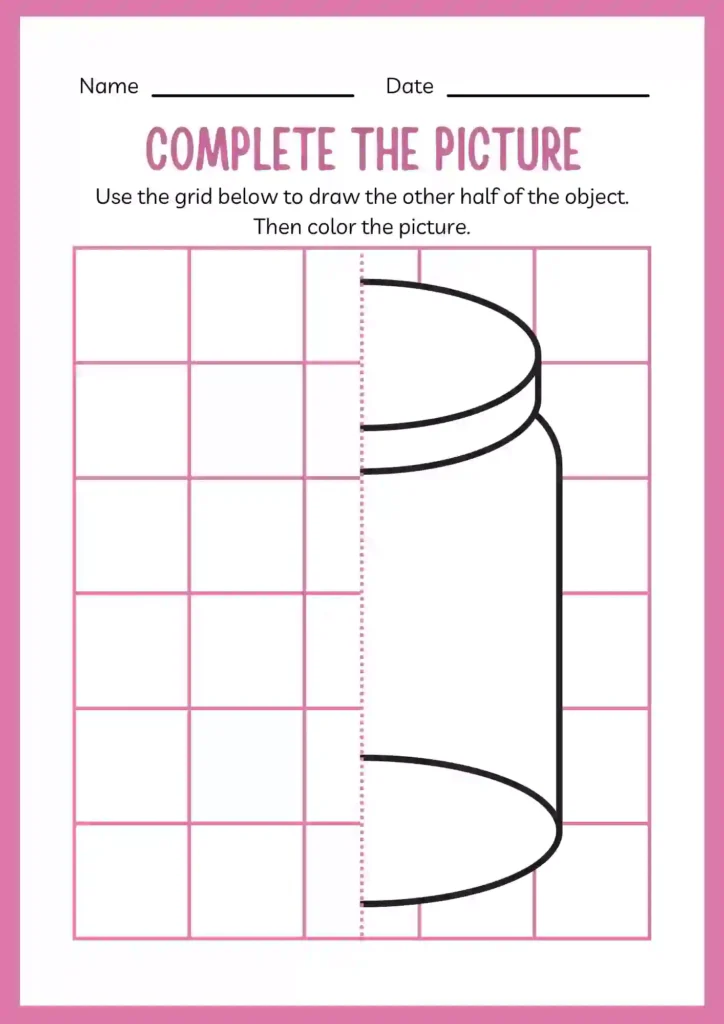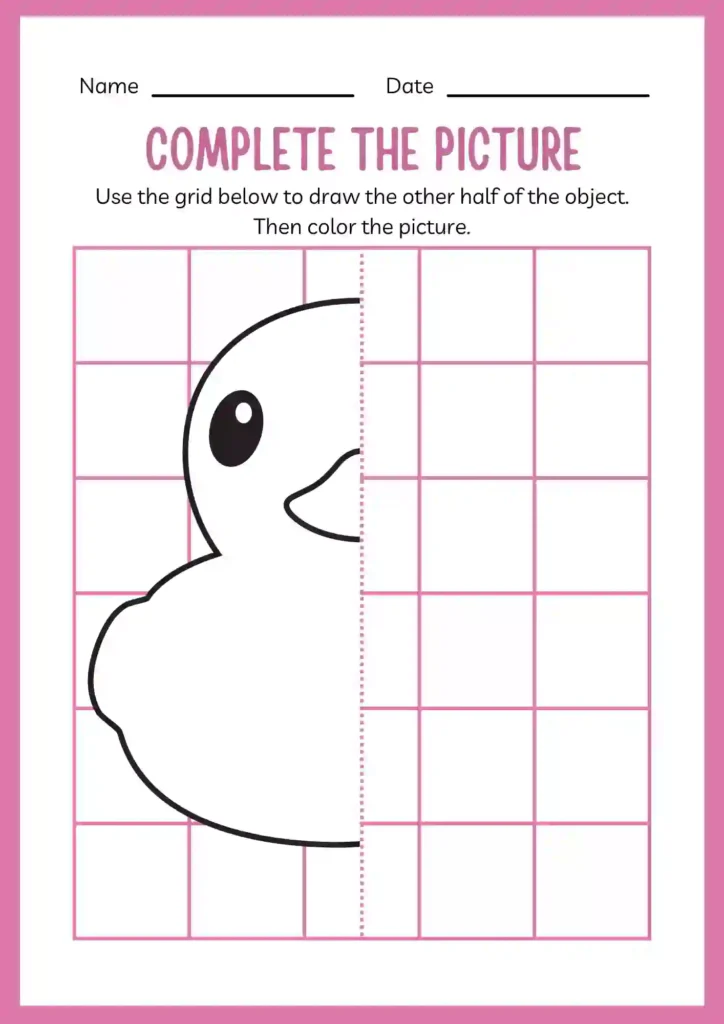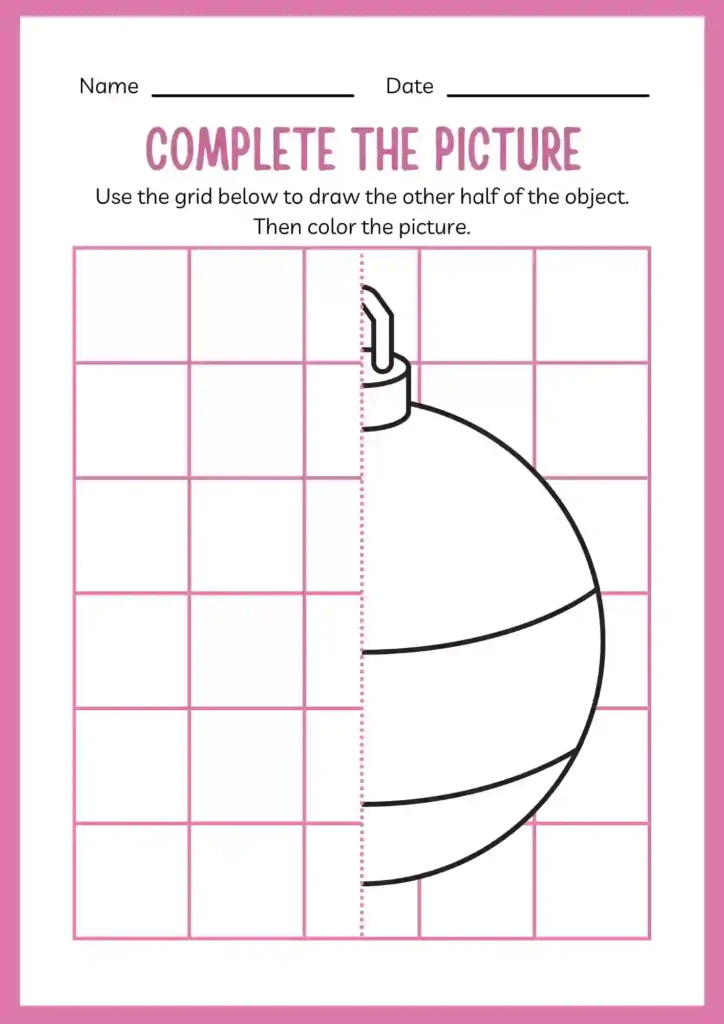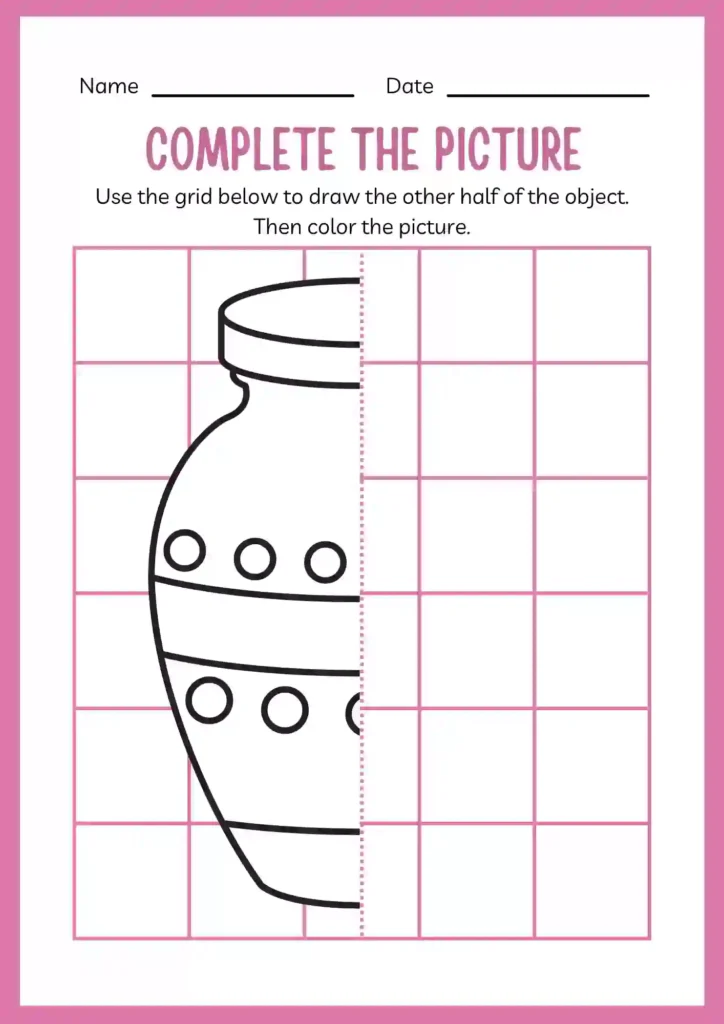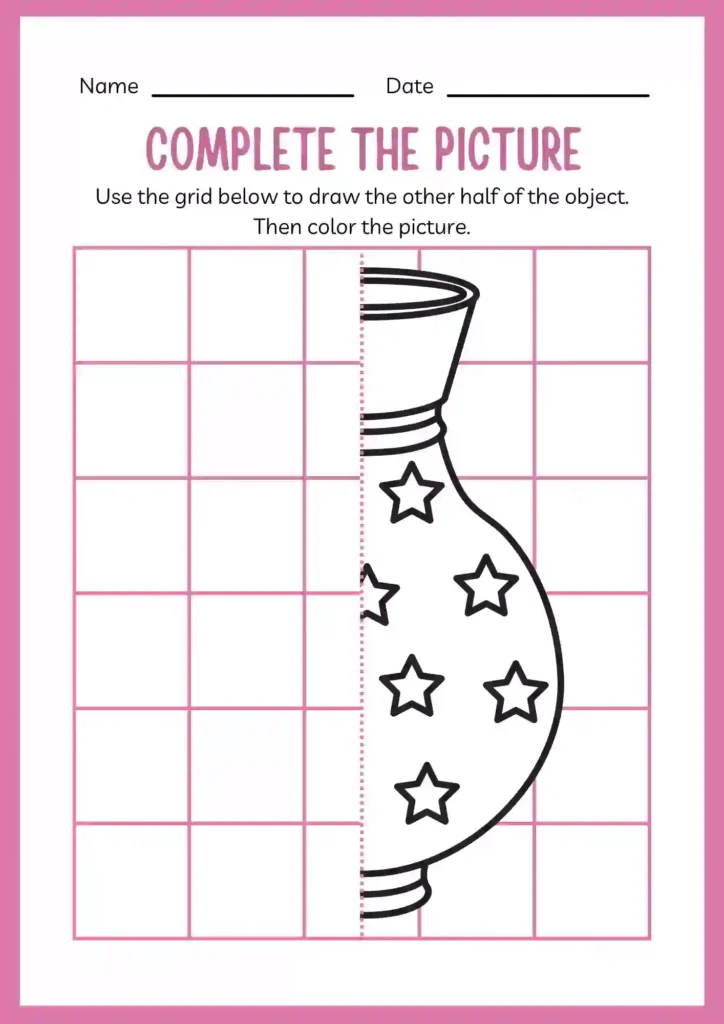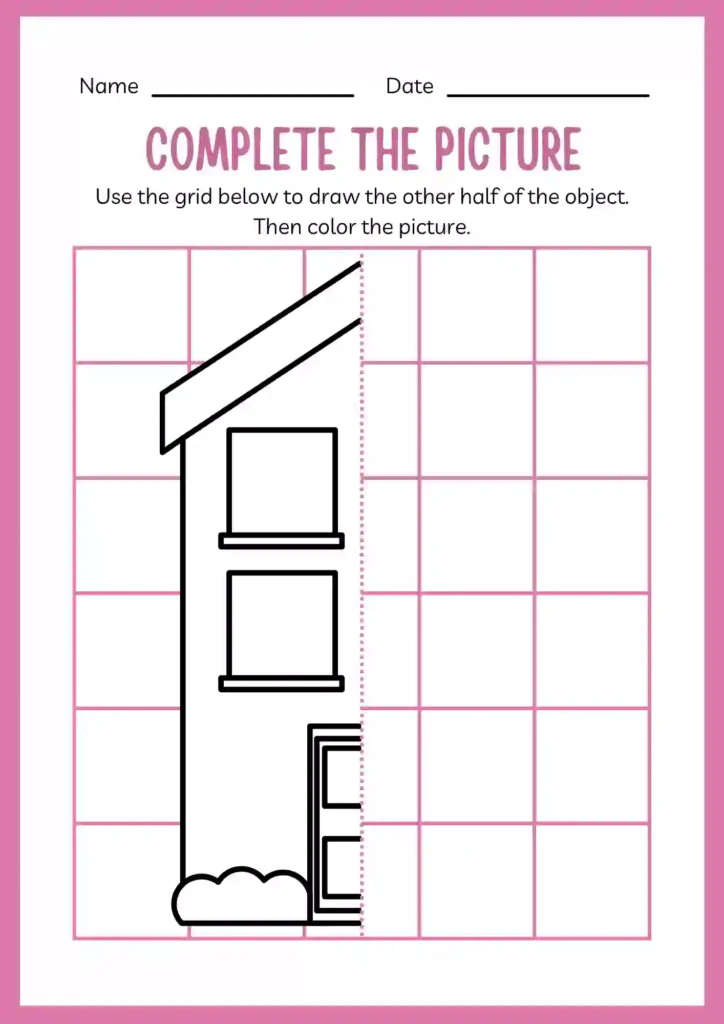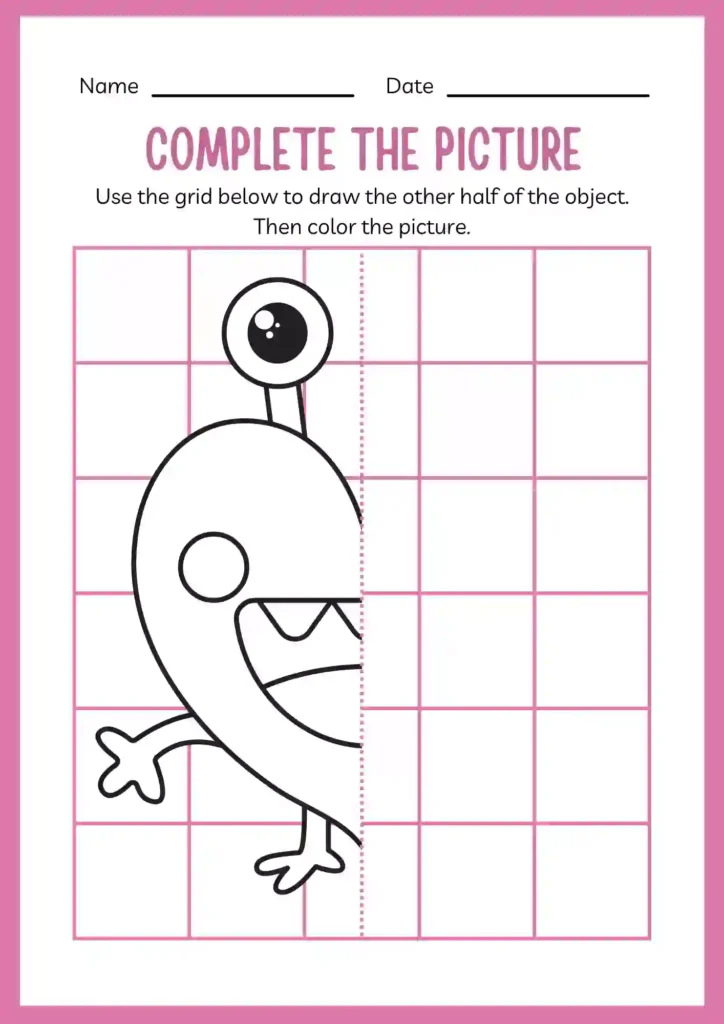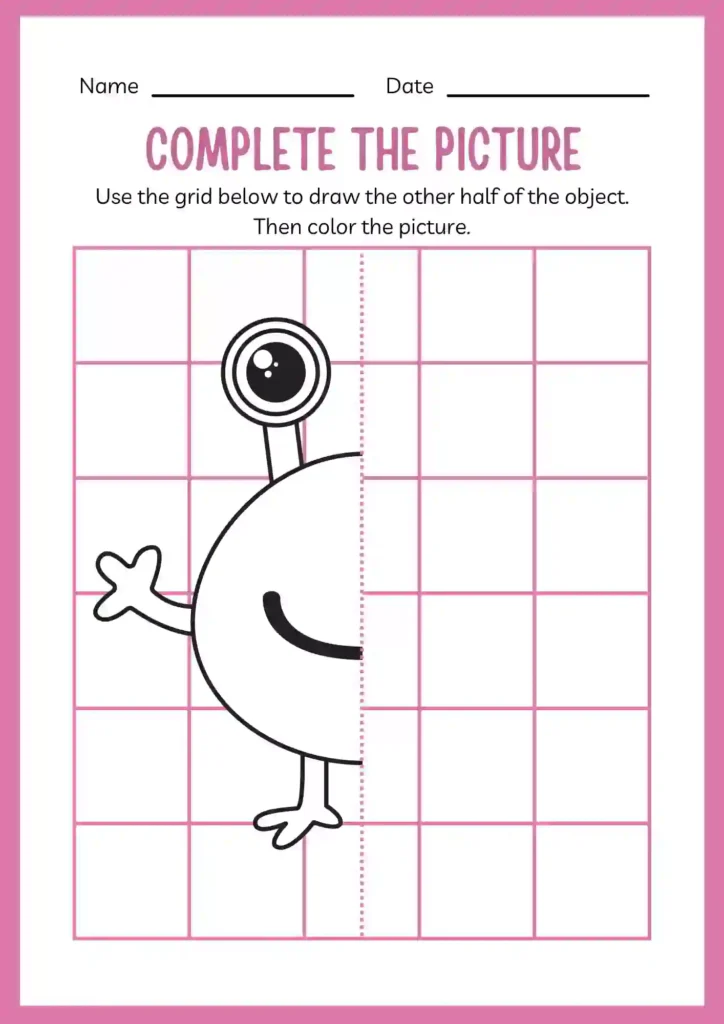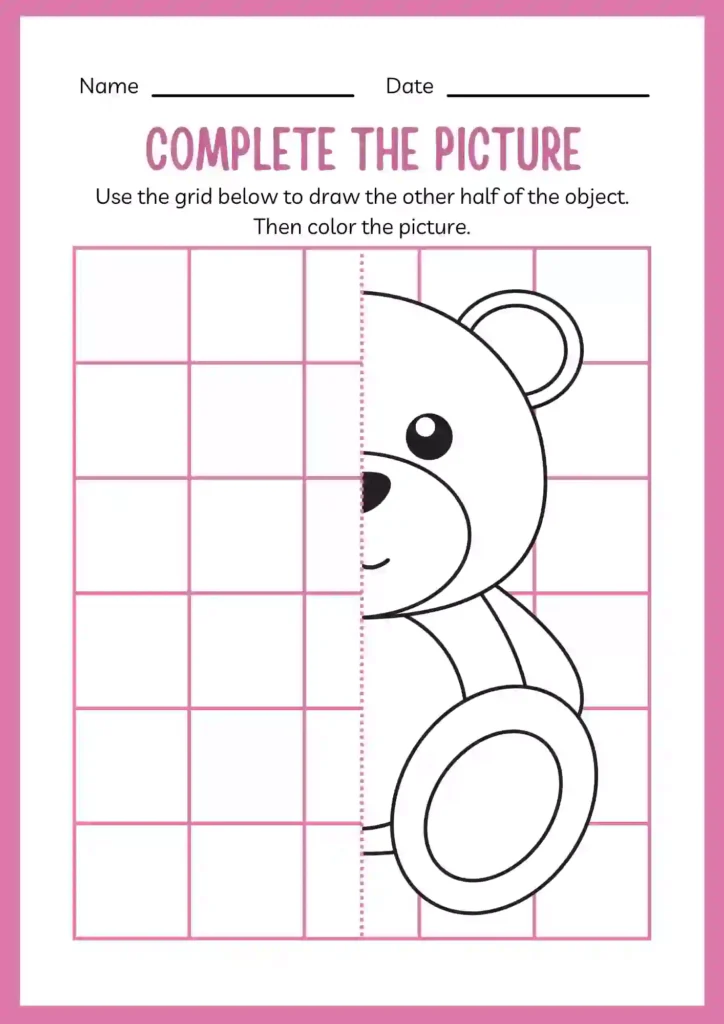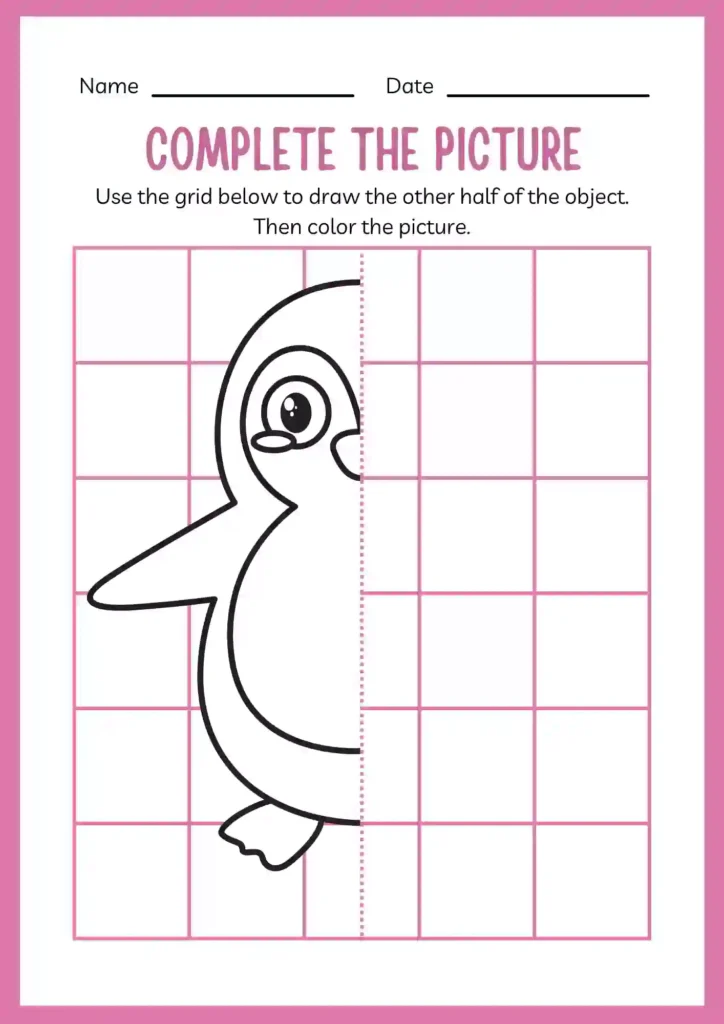Symmetry is an essential concept in early mathematics that helps young learners develop critical thinking and spatial awareness. Our free symmetry line worksheets for kindergarten provide engaging activities that encourage children to explore symmetry through drawing and completing pictures. This article outlines the features of these worksheets, their intended audience, and how to effectively use them in a classroom or home setting.
Symmetry Line Worksheets for Kindergarten Details:
| Feature | Details |
|---|---|
| Format | Downloadable PDF |
| Number of Pages | 20 |
| Content | Activities include drawing lines of symmetry, completing half pictures, and identifying symmetrical shapes. |
| Illustrations | Yes, playful and age-appropriate |
| Suitable For | Nursery, Lkg & Ukg |
| Printable? | Yes |
Learning Objectives:
- Recognize Symmetry: Students will learn how to spot shapes that are symmetrical, meaning they look the same on both sides. They will understand what symmetry is and how it works.
- Improve Fine Motor Skills: Through fun activities like drawing and coloring, students will practice using their hands and fingers. This will help them develop better control and coordination, which are important for many tasks.
- Foster Creativity: By finishing pictures that are only half drawn, children will have the chance to show their imagination and creativity. At the same time, they will learn more about symmetry and how it can be found in art.
Who is this for?
These worksheets are designed for young learners in LKG, UKG, nursery, preschool, and kindergarten. They are perfect for use in the classroom, at home, or in any educational setting where foundational math skills are being developed.
Materials Needed
To effectively use these symmetry worksheets, you will need:
- Printed copies of the worksheets
- Crayons or colored pencils for drawing and coloring
- A ruler (optional) for drawing straight lines
How to Use
- Introduce the Activity: Start by talking about symmetry in a way that’s easy to understand. You can explain that symmetry means something looks the same on both sides. Use simple shapes like circles, squares, and triangles to help explain this idea. Show the kids how if you fold a shape in half, you get two matching parts. This will help them see symmetry in a fun way.
- Demonstrate: Pick one of the worksheets to show the kids how to do the activity. For example, you can demonstrate how to draw a line of symmetry in a shape or complete a picture that is only half-drawn. Make sure to highlight how important it is to create two sides that look exactly alike.
- Guided Practice: As a class, work through a few worksheets together. Encourage the students to talk about which shapes they think are symmetrical and how they can finish the pictures. This will help them learn from each other and share their ideas.
- Independent Practice: After doing some practice together, let the students work on the rest of the worksheets by themselves. Encourage them to think carefully about symmetry as they complete the activities. This is their chance to explore and apply what they’ve learned.
- Review and Discuss: Once everyone has finished their worksheets, bring the students together to go over their answers. Discuss the different ways they approached the activities and reinforce what they learned about symmetry. This is a great opportunity for them to share their thoughts and learn from one another.
Tips
- Use Pictures and Flashcards: Try using flashcards that show shapes that are the same on both sides. This can help make the idea of symmetry clearer and easier to understand.
- Get Hands-On with Real Objects: Look for symmetry in everyday things around you. You can use items like leaves, toys, or even your own drawings to find examples of symmetrical shapes in the world.
- Work Together with a Friend: It’s a great idea to let students team up with a partner. They can talk about what they discover and help each other find symmetrical shapes. Working together makes learning more fun and effective!
Additional Activities
- Symmetry Art Projects:Let the students unleash their creativity by making their own symmetrical art. They can use paint or different collage materials to create beautiful designs that are the same on both sides.
- Nature Walk:Plan a nature walk for the students where they can enjoy the outdoors. During the walk, encourage them to look for and take pictures of symmetrical objects they find in nature, like leaves, flowers, or even buildings. This will help them see symmetry all around them!
Download the PDF File Here:
Click To Download Symmetry Line Worksheets for Kindergarten Pdf
How to Print
To print the worksheets:
- Download the PDF: Click the link to download the worksheets.
- Set Up Printing: Ensure your printer is ready and adjust settings as needed.
- Print: Preview the document to confirm layout and then print the worksheets.
Tips for Parents and Educators
- Celebrate Efforts with Kind Words: It’s important to recognize and celebrate the hard work and efforts of children. When you notice them trying their best, let them know! This can help them feel good about learning and encourage them to keep exploring new things.
- Get Kids Involved in Conversations: When you are doing activities that involve symmetry, like building or drawing, invite children to join in the conversation. Ask them questions and encourage them to share their thoughts. This makes learning fun and helps them understand the concept better.
- Make Learning a Daily Habit: Try to include practice about symmetry in your everyday routines. For example, you can point out symmetrical shapes during breakfast or while playing outside. This consistent practice helps reinforce what they are learning and makes it easier for them to remember.
- Encourage Teamwork and Sharing: Create chances for children to work together on projects or activities. When they collaborate, they can share their discoveries and learn from each other. This teamwork not only helps them understand symmetry better but also builds social skills and friendships.
Common Mistakes and Solutions
- Trouble Seeing Symmetry: Some kids find it hard to spot symmetrical shapes. To make it easier for them, you can show them clear examples of these shapes, like a butterfly or a heart. You can also give them different shapes to practice with, so they can get better at recognizing symmetry.
- Not Feeling Interested: If you notice that your students look bored or uninterested in the lesson, try to make learning more fun! You can include games or hands-on activities that allow them to interact with the material. This way, they will be more engaged and excited about what they are learning.
- Difficulty with Drawing: Some students might struggle when it comes to drawing symmetrical shapes. To help them out, encourage them to use tools like rulers or templates. These tools can guide them in drawing straight lines and help them create perfect symmetrical shapes. This practice will boost their confidence and skills in drawing!
How to Craft Your Own Symmetry Worksheets
- Pick Some Shapes: Start by choosing some simple shapes that you want your students to work with. Good options include circles, squares, and triangles. These shapes are easy to recognize and will help students understand symmetry better.
- Create Fun Activities: Think of some fun activities that your students can do with these shapes. For example, you can ask them to draw lines of symmetry on the shapes or to complete pictures by adding the missing symmetrical parts. This will make the learning process more interactive!
- Write Clear Instructions: Make sure to write simple and clear instructions for each activity. This will help your students understand what they need to do without getting confused. You can use short sentences and easy words to make it even clearer.
- Add Color and Design: To make your worksheets more appealing, use bright colors and interesting designs. Colorful visuals can grab your students’ attention and make them excited to learn about symmetry. You can even add some fun illustrations to make it more engaging!
- Vary the Difficulty: Create worksheets with different levels of difficulty to cater to students with varying abilities. Start with simple tasks and gradually increase the complexity as students progress. This will ensure that all students feel challenged and engaged.
- Include Real-Life Examples: Use real-life examples of symmetry to make the concept more relatable for your students. Point out symmetrical patterns in nature, architecture, or everyday objects. This will help students understand that symmetry is all around them.
- Encourage Creativity: Allow your students to explore their creativity by providing opportunities for them to design their own symmetrical patterns or complete open-ended activities. This will foster their imagination and problem-solving skills.
Leave a Comment
We value your feedback! Share your thoughts and experiences with these symmetry worksheets in the comments below. Your insights help us improve our resources and support young learners.
Love From Lkg Worksheets!
